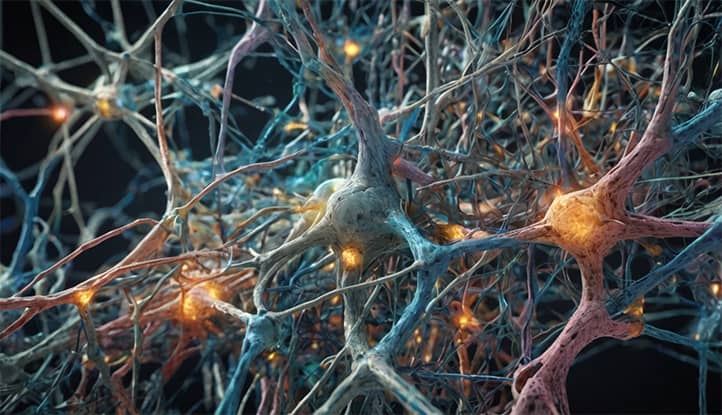Higher Nervous Activity (HNA) is the complex process occurring in the central nervous system of humans and higher animals. The term “higher nervous activity” was introduced by the prominent Russian physiologist I.P. Pavlov to denote the neurophysiological mechanisms underlying mental functions.
The study of higher nervous activity has a long and rich history:
- Antiquity: The first attempts to understand brain function were made in antiquity. Hippocrates (460–370 BCE) believed the brain to be the center of thought and emotion. Galen (129–200 CE) conducted the first anatomical studies of the brain.
- Middle Ages and Renaissance: The development of brain anatomy. Andreas Vesalius (1514–1564) published detailed anatomical descriptions of the brain.
- 17th–18th centuries: René Descartes (1596–1650) proposed a mechanistic model of the nervous system. Thomas Willis (1621–1675) introduced the term “reflex.”
- 19th century: Franz Joseph Gall (1758–1828) developed the theory of phrenology. Paul Broca (1824–1880) and Carl Wernicke (1848–1905) discovered speech centers in the cerebral cortex.
- Late 19th – early 20th centuries: I.M. Sechenov (1829–1905) published the book Reflexes of the Brain, laying the foundation for the Russian physiological school. I.P. Pavlov (1849–1936) developed the theory of conditioned reflexes and introduced the concept of higher nervous activity.
- 20th century: The development of neurophysiology and cognitive psychology. Donald Hebb (1904–1985) proposed the theory of neural ensembles. Eric Kandel (born 1929) researched the molecular mechanisms of memory.
- 21st century: The application of modern neuroimaging methods and molecular biology to study the brain. The development of neuroinformatics and artificial intelligence.
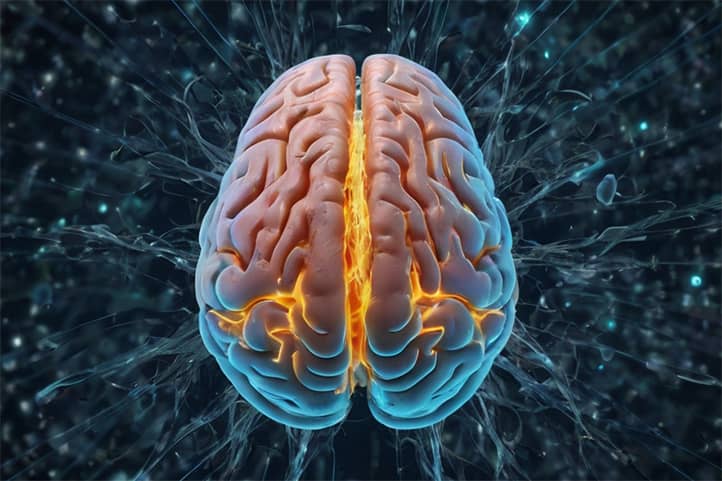
Brain Anatomy
The human brain, weighing just about 1.3 kg, is the most complex structure known in the universe. Its 86 billion neurons form trillions of connections, creating an incredibly intricate neural network.
Human brain evolution took place over millions of years, gradually forming organs responsible for higher cognitive functions. This process led to a significant increase in the volume of the cerebral cortex, especially the frontal lobes.
Studying brain anatomy not only reveals the mysteries of our consciousness but also has significant practical implications. Understanding the structure and functions of various brain regions helps in diagnosing and treating neurological disorders, as well as in developing new neurorehabilitation methods.
Main Brain Regions
- Cerebral Hemispheres: Account for about 80% of the brain’s mass and are responsible for higher cognitive functions.
- Cerebellum: Coordinates movement and is involved in learning and memory processes.
- Brainstem:
- Midbrain: Participates in the processing of visual and auditory information.
- Pons: Connects various parts of the brain.
- Medulla Oblongata: Regulates vital functions (breathing, heartbeat).
- Diencephalon:
- Thalamus: The “relay station” for sensory information.
- Hypothalamus: Regulates homeostasis and the endocrine system.
Cerebral Cortex
The cerebral cortex consists of six layers of neurons and plays a key role in higher nervous activity:
- Frontal Lobe:
- Prefrontal Cortex: Executive functions, planning, decision-making.
- Motor Cortex: Controls voluntary movements.
- Premotor Cortex: Planning and coordination of movements.
- Parietal Lobe:
- Primary Somatosensory Cortex: Processes tactile information.
- Associative Parietal Cortex: Spatial perception, attention.
- Temporal Lobe:
- Primary Auditory Cortex: Processes sound information.
- Associative Temporal Cortex: Processes complex auditory information, participates in memory formation.
- Wernicke’s Area: Speech comprehension.
- Occipital Lobe:
- Primary Visual Cortex: Processes visual information.
- Associative Visual Cortex: Complex processing of visual stimuli.
It is important to note that these areas interact closely with each other, forming complex neural networks that ensure the integrated functioning of the brain.
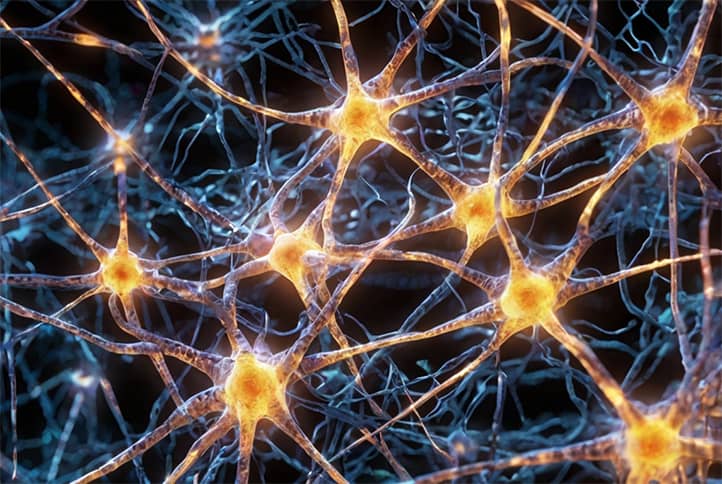
Neurophysiological Foundations
Neurophysiology reveals the fascinating world of electrochemical processes underlying the functioning of the nervous system. Every movement, thought, or emotion is the result of complex interactions among billions of neurons.
The discovery of neuroplasticity revolutionized the understanding of brain function. The nervous system’s ability to change and adapt throughout life provides new opportunities for learning and recovery after injury.
Studying the neurophysiological foundations of higher nervous activity helps improve models of artificial intelligence. Understanding the principles of the biological brain inspires developers to create neuromorphic computers capable of imitating some aspects of human thinking.
Neurons and Synapses
Neurons are the primary functional units of the nervous system. They have the unique ability to generate and transmit electrical signals.
The structure of a neuron includes:
- Cell body (soma): Contains the nucleus and most of the organelles.
- Dendrites: Receive signals from other neurons.
- Axon: Conducts electrical signals from the cell body to synapses.
Synapses are specialized connections between neurons. There are two main types:
- Chemical synapses:
- Signals are transmitted through neurotransmitters.
- They provide unidirectional signal transmission.
- They can be excitatory or inhibitory.
- Electrical synapses:
- Signals are transmitted directly through ion channels.
- They provide fast bidirectional signal transmission.
- They are less common than chemical synapses.
Neurotransmitters
Neurotransmitters play a key role in signal transmission between neurons and the regulation of higher nervous activity. Major neurotransmitters include:
- Glutamate:
- The main excitatory neurotransmitter in the CNS.
- Involved in learning and memory processes.
- Excess can cause excitotoxicity.
- GABA (gamma-aminobutyric acid):
- The main inhibitory neurotransmitter.
- Regulates the level of neuron excitation.
- Important for regulating anxiety and sleep.
- Dopamine:
- Involved in the reward and motivation system.
- Regulates motor activity.
- Dopaminergic system dysfunction is associated with Parkinson’s disease and schizophrenia.
- Serotonin:
- Regulates mood, sleep, and appetite.
- Involved in regulating pain sensitivity.
- Dysfunction of the serotonin system is associated with depression and anxiety disorders.
- Norepinephrine:
- Influences attention and wakefulness.
- Involved in the “fight or flight” response.
- Important for memory consolidation.
- Acetylcholine:
- The main neurotransmitter in neuromuscular synapses.
- Involved in memory and learning processes.
- Important for regulating sleep and wakefulness.
The balance of these neurotransmitters is crucial for the normal functioning of higher nervous activity. Disruptions in neurotransmitter systems can lead to various neurological and mental disorders.
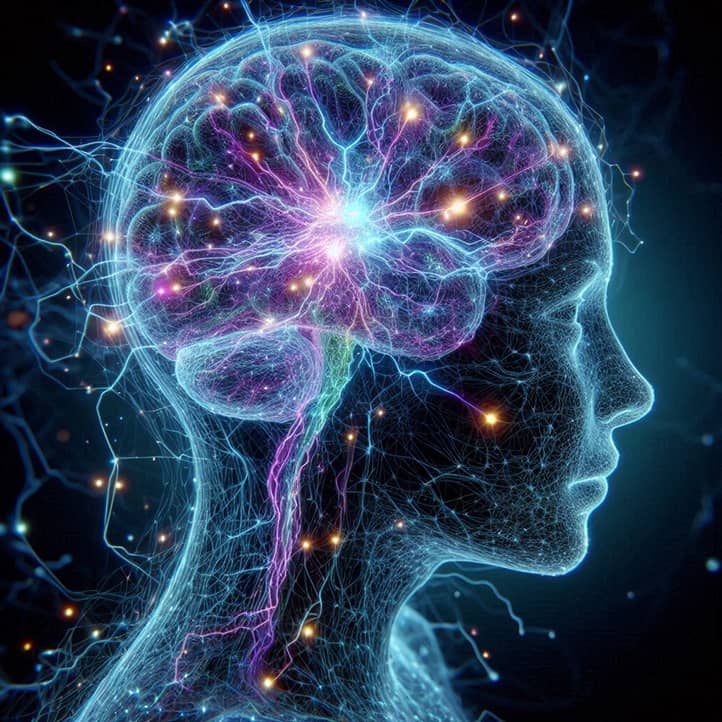
Higher Nervous Activity: Main Processes
Human higher nervous activity is a unique combination of innate and acquired functions. This remarkable capacity for adaptation and learning has allowed our species to achieve incredible heights in the development of culture and technology.
Studying the main processes of higher nervous activity paves the way for understanding individual differences between people. Features of perception, memory, thinking, and speech form the unique cognitive profile of each person.
Modern neuroscience research increasingly focuses on the study of social aspects of higher nervous activity. Understanding the neurobiological foundations of empathy, cooperation, and social cognition can help address many societal issues.
Perception
Perception is the complex process of organizing and interpreting sensory information, which involves several stages:
- Stimulus detection: The registration of physical or chemical changes in the environment by sensory receptors.
- Transduction: The conversion of stimulus energy into an electrical signal in a neuron.
- Signal transmission: The conduction of nerve impulses along sensory pathways to the relevant areas of the cerebral cortex.
- Information processing: The analysis and integration of sensory signals in the cerebral cortex.
- Pattern recognition: Matching received information with already stored patterns and knowledge.
- Conscious perception: The formation of a complete image of the perceived object or phenomenon.
It is important to note that perception is not a passive process. It is actively modulated by attention, past experiences, and the current state of the individual.
Memory
Memory is the brain’s ability to retain, store, and recall information. Several types of memory are distinguished:
- Sensory memory:
- Short-term storage of unprocessed sensory information.
- Duration: fractions of a second.
- Example: iconic (visual) and echoic (auditory) memory.
- Short-term memory:
- Storage of a small amount of information for a short time.
- Duration: up to 30 seconds.
- Limited capacity: 7±2 items.
- Working memory:
- Retention and manipulation of information for performing cognitive tasks.
- Associated with the activity of the prefrontal cortex.
- Long-term memory:
- Declarative (explicit) memory:
- Semantic memory: Facts and general knowledge.
- Episodic memory: Personal experiences and events.
- Procedural (implicit) memory:
- Skills and habits.
- Conditioned reflexes.
- Priming.
- Declarative (explicit) memory:
Memory processes include:
- Encoding: Transforming information into a form that the brain can store.
- Consolidation: Stabilizing memory traces.
- Storage: Maintaining information in long-term memory.
- Retrieval: Extracting stored information.
Neurobiological mechanisms of memory include:
- Synaptic plasticity.
- Long-term potentiation and depression.
- Structural changes in synapses and neural networks.
Thinking
Thinking is the highest form of cognitive activity, allowing one to reflect on the essential properties and relationships of objects and phenomena. It includes:
- Analysis and synthesis of information:
- Analysis: Breaking down a whole into parts and identifying their properties.
- Synthesis: Combining parts into a whole based on essential connections.
- Abstraction:
- Highlighting essential features of an object or phenomenon.
- Disregarding non-essential details.
- Generalization:
- Grouping objects and phenomena by common characteristics.
- Forming general concepts and categories.
- Concept formation:
- Reflecting on the essential characteristics of a class of objects or phenomena.
- Hierarchical organization of concepts.
- Problem-solving:
- Identifying a problematic situation.
- Formulating hypotheses.
- Testing hypotheses.
- Selecting the optimal solution.
- Decision-making:
- Evaluating alternatives.
- Predicting consequences.
- Choosing the optimal course of action.
Neurobiological foundations of thinking include:
- Activity of the prefrontal cortex.
- Interaction between various brain regions.
- Neuronal oscillations across different frequency ranges.
Speech
Speech is a unique human ability closely related to thinking and other cognitive functions. It includes:
- Speech comprehension:
- Perception and recognition of speech sounds.
- Analysis of sentence grammar.
- Extracting meaning from what is heard or read.
- Speech production:
- Thought formation.
- Selection of words and grammatical constructions.
- Articulation and phonation.
- Reading:
- Visual recognition of letters and words.
- Comprehension of the written text.
- Writing:
- Converting thoughts into written text.
- Mastering spelling and grammar skills.
Main brain areas associated with speech:
- Broca’s area: Motor speech.
- Wernicke’s area: Speech comprehension.
- Angular gyrus: Integration of various aspects of language.
- Arcuate fasciculus: Connects Broca’s and Wernicke’s areas.
Speech functions in the context of higher nervous activity:
- Communicative function: Information exchange between people.
- Regulative function: Planning and controlling behavior.
- Cognitive function: Forming and expressing thoughts.
- Emotional-expressive function: Expressing emotions and attitudes.
Speech development is closely related to general cognitive development and is an important indicator of the formation of higher nervous activity in children.
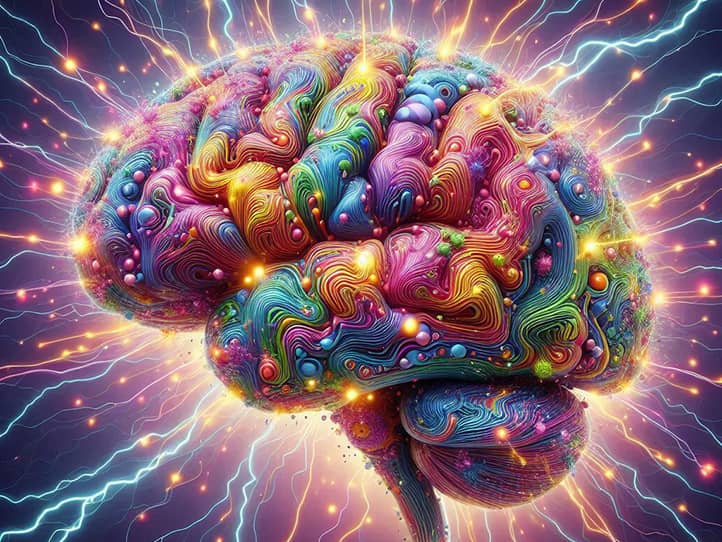
Conditional and Unconditional Reflexes
The theory of conditional reflexes developed by I.P. Pavlov became one of the cornerstones of modern neuroscience. It not only explained the mechanisms of forming new behavioral responses but also laid the foundation for understanding the processes of learning and memory.
The study of conditional and unconditional reflexes opened the way to understanding the evolutionary basis of behavior. Unconditional reflexes, formed through evolution, ensure the organism’s basic survival, while conditional reflexes allow rapid adaptation to changing environmental conditions.
Modern research shows that the mechanisms of forming conditional reflexes play an important role not only in adaptive behavior but also in the development of various mental disorders. Understanding these processes opens new possibilities for treating phobias, addictions, and other behavioral issues.
Pavlov’s Theory
Ivan Petrovich Pavlov made a significant contribution to the study of higher nervous activity by developing the theory of conditional reflexes. The key points of the theory include:
1. Unconditional reflexes:
- Innate, genetically programmed responses to specific stimuli.
- Provide the organism with basic survival functions.
- Do not require learning.
2. Conditional reflexes:
- Acquired responses developed during life.
- Formed based on unconditional reflexes.
- Ensure adaptation to changing environmental conditions.
3. Mechanism of forming conditional reflexes:
- Pairing of a conditional (neutral) stimulus with an unconditional stimulus.
- Repeated pairing of stimuli.
- Formation of new neural connections.
4. Inhibition of conditional reflexes:
- External inhibition: The influence of extraneous stimuli.
- Internal inhibition: Extinction, differentiation, delay.
5. Dynamic stereotype:
- A stable system of conditional reflexes.
- Ensures the automation of behavior.
Reflex Examples
- Unconditional reflexes:
- Salivation at the sight of food.
- Pulling a hand away from a hot object.
- Sneezing.
- Blinking.
- Sucking reflex in newborns.
- Knee-jerk reflex.
- Conditional reflexes:
- Salivation at the sound of a bell (Pavlov’s classical experiment).
- Emotional reaction to specific music.
- The skill of driving a car.
- Development of “conditional” fear (e.g., fear of visiting the dentist).
- Reaction to an alarm clock.
- Orienting reflex to a new stimulus.
Understanding the mechanisms of forming conditional reflexes is crucial for studying learning and memory processes within the context of higher nervous activity. This theory laid the foundation for behaviorism and had a significant impact on the development of psychology and education.
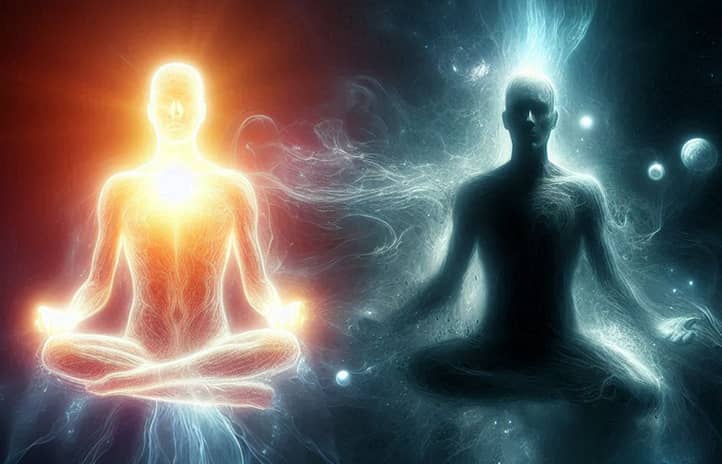
Consciousness and the Unconscious
The problem of consciousness remains one of the greatest mysteries of modern science. Despite significant progress in studying the neural correlates of consciousness, the question of how subjective experience arises from physical processes in the brain continues to provoke heated debates among scientists and philosophers.
Studies of the unconscious reveal an astonishing world of hidden processes that influence our behavior and decision-making. Modern neuroimaging methods allow the observation of brain activity related to unconscious stimuli, opening new horizons in understanding the human psyche.
The study of altered states of consciousness, such as meditation or hypnosis, provides a unique opportunity to explore the plasticity of consciousness and its connection to neural processes. These studies not only expand our understanding of the nature of consciousness but also open new therapeutic possibilities.
Theories of Consciousness
Consciousness is one of the most complex and enigmatic topics in the study of higher nervous activity. Several theories attempt to explain this phenomenon:
- Global Workspace Theory (Bernard Baars):
- Consciousness arises from the global dissemination of information in the brain.
- Only a small portion of information becomes conscious.
- Consciousness acts as a “spotlight,” highlighting important information.
- Integrated Information Theory (Giulio Tononi):
- Consciousness is integrated information in the brain.
- The level of consciousness is determined by the amount and quality of integrated information.
- Proposes a mathematical approach to measuring consciousness.
- Higher-Order Thought Theory (David Rosenthal):
- Conscious experience arises when there is a higher-order thought about a mental state.
- Distinguishes between primary consciousness (simple awareness) and reflective consciousness.
- Neurobiological Theory of Consciousness (Gerald Edelman):
- Consciousness arises from reentrant interactions between different brain regions.
- The thalamocortical system plays a crucial role.
- Distinguishes between primary and higher consciousness.
- Theory of Consciousness as a “Biological Computer” (Stanislas Dehaene):
- Consciousness is a special mode of operation of the brain’s neural networks.
- Conscious information processing is characterized by flexibility and the ability to generalize.
Role of the Subconscious
The unconscious, or subconscious, plays an important role in higher nervous activity:
- Skill automation:
- Transfer of consciously learned actions into automatic mode.
- Frees up conscious resources for solving more complex tasks.
- Intuitive decision-making:
- Fast processing of a large amount of information without conscious analysis.
- Important in situations requiring quick reactions.
- Emotional reactions:
- Rapid emotional responses to stimuli.
- Creates the emotional backdrop of perception.
- Formation and maintenance of habits:
- Automation of repetitive actions.
- Saves cognitive resources.
- Processing information outside conscious attention:
- Analyzes background stimuli.
- Prepares information for conscious consideration.
- Psychological defense mechanisms:
- Repression of traumatic experiences.
- Regulation of anxiety and other negative emotions.
- Creative processes:
- Incubation of ideas.
- Sudden insights and realizations.
The interaction of conscious and unconscious processes ensures effective adaptation of the organism to the environment and is a key aspect of higher nervous activity.
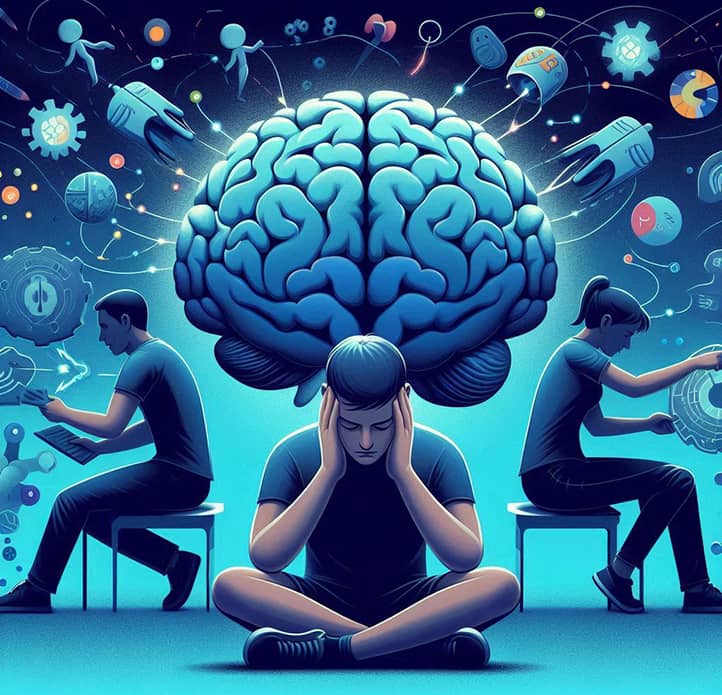
Emotions and Motivation
Emotions and motivation are fundamental aspects of human experience, playing a key role in decision-making, social interaction, and personality formation. Modern neurobiological research reveals the complex neural networks underlying emotional responses and motivational states.
The discovery of the role of mirror neurons in emotional contagion and empathy has revolutionized the understanding of socio-emotional processes. These studies not only shed light on the evolutionary basis of social behavior but also open new perspectives in the treatment of autism spectrum disorders and other social dysfunctions.
The study of the neurochemical foundations of emotions and motivation has led to the development of new approaches to treating depression, anxiety disorders, and addictions. Understanding the role of neurotransmitters, such as serotonin, dopamine, and oxytocin, in regulating emotional states opens the way to more effective and targeted therapies.
Limbic System
The limbic system is a complex of brain structures that plays a key role in emotional regulation and motivation. Key components include:
- Amygdala:
- Processing emotionally significant stimuli.
- Formation of emotional memory.
- “Fight or flight” response.
- Hippocampus:
- Formation of new memories.
- Spatial orientation.
- Stress regulation.
- Hypothalamus:
- Control of autonomic functions.
- Regulation of the hormonal system.
- Maintenance of homeostasis.
- Cingulate gyrus:
- Integration of emotions and cognitive processes.
- Regulation of pain.
- Social behavior.
- Septal area:
- Involvement in emotional processing.
- Connection with the reward system.
- Orbitofrontal cortex:
- Evaluation of the emotional significance of stimuli.
- Decision-making based on emotional experience.
These structures interact closely with each other and with other brain regions, ensuring complex emotional regulation and motivational behavior.
Influence on Behavior
Emotions and motivation significantly influence higher nervous activity:
- Direct attention to important stimuli:
- Quick identification of emotionally significant information.
- Increased alertness in response to potential threats.
- Affect memory and learning processes:
- Enhanced recall of emotionally charged events.
- Formation of associative connections based on emotional experience.
- Modulate decision-making processes:
- Integration of emotional information into the decision-making process.
- Influence on risk and benefit assessment.
- Regulate social behavior:
- Empathy and understanding of others’ emotions.
- Formation and maintenance of social bonds.
- Provide adaptive responses to environmental changes:
- Quick mobilization of resources in stressful situations.
- Formation of long-term behavioral strategies.
- Influence cognitive processes:
- Modulation of attention and perception.
- Impact on creativity and flexibility of thinking.
- Shape motivational states:
- Activation of goal-directed behavior.
- Sustaining effort to overcome obstacles.
Understanding the neurobiological basis of emotions and motivation is essential for studying many aspects of higher nervous activity, including mental disorders and behavioral problems. This knowledge is applied in various fields, from clinical psychology to marketing and artificial intelligence.

Sleep and Wakefulness
Sleep, which occupies about a third of our lives, has long remained a mystery to scientists. Modern research reveals the brain’s surprising activity during sleep, showing that this state plays a critical role in memory consolidation, emotional regulation, and the restoration of the body.
Circadian rhythms, which regulate the sleep-wake cycle, have a profound impact on all aspects of our physiology. The discovery of the molecular mechanisms of biological clocks, recognized with a Nobel Prize, has opened new perspectives on understanding and treating sleep disorders, as well as related metabolic and mental disorders.
Research on lucid dreaming not only reveals the amazing capabilities of human consciousness but also provides a unique tool for studying the neural correlates of consciousness and self-awareness. This area of research sheds light on new horizons in understanding the nature of subjective experience and its connection to brain activity.
Sleep Phases
Sleep is a complex physiological process characterized by the cyclical alternation of different phases:
- Rapid Eye Movement (REM) Sleep:
- Characterized by rapid eye movements.
- Increased brain activity, similar to wakefulness.
- Atonia (temporary paralysis) of major muscle groups.
- Associated with vivid dreams.
- Occupies about 20-25% of total sleep time in adults.
- Non-REM Sleep:
- a) Stage 1:
- Light sleep, the transition from wakefulness to sleep.
- Lasts a few minutes.
- b) Stage 2:
- Deeper sleep.
- Characterized by “sleep spindles” and K-complexes on the EEG.
- Occupies about 45-55% of total sleep time.
- c) Stages 3 and 4 (Delta Sleep):
- Deep sleep.
- Characterized by slow delta waves on the EEG.
- Important for physical restoration of the body.
- a) Stage 1:
These phases are organized into cycles, each lasting about 90-110 minutes. A person typically goes through 4-6 such cycles per night.
Importance for Higher Nervous Activity
Sleep plays a critical role in maintaining the normal functioning of higher nervous activity:
- Memory Consolidation and Learning:
- Transfers information from short-term to long-term memory.
- Strengthens and stabilizes neural connections formed by new experiences.
- Integrates new information with existing knowledge.
- Emotional Regulation:
- Processes emotional experiences.
- Reduces emotional reactivity to negative stimuli.
- Maintains emotional balance.
- Neural Restoration:
- Synaptic homeostasis (normalization of synaptic strength).
- Organization and optimization of neural networks.
- Elimination of excessive synaptic connections.
- Brain Cleansing of Toxins:
- Activation of the glymphatic system during sleep.
- Removal of metabolic waste, including beta-amyloid.
- Reducing the risk of neurodegenerative diseases.
- Hormonal Balance Regulation:
- Growth hormone release during deep sleep.
- Regulation of cortisol and other stress hormones.
- Impact on metabolism and appetite.
- Cognitive Function Restoration:
- Improved attention and concentration.
- Increased speed of information processing.
- Enhanced creativity and problem-solving ability.
- Maintenance of Brain Plasticity:
- Promotion of neurogenesis (the formation of new neurons).
- Regulation of synaptic plasticity.
- Adaptation of the brain to new experiences.
- Impact on the Immune System:
- Strengthening the immune response.
- Regulation of inflammatory processes.
Lack of sleep can negatively affect various aspects of higher nervous activity:
- Reduced learning and memory capacity.
- Impaired attention.
- Increased emotional reactivity.
- Disrupted decision-making processes.
- Reduced creativity.
- Impaired motor skills.
- Increased risk of mental disorders.
Research shows that chronic sleep deprivation can lead to long-term negative consequences for brain health, including an increased risk of developing neurodegenerative diseases.
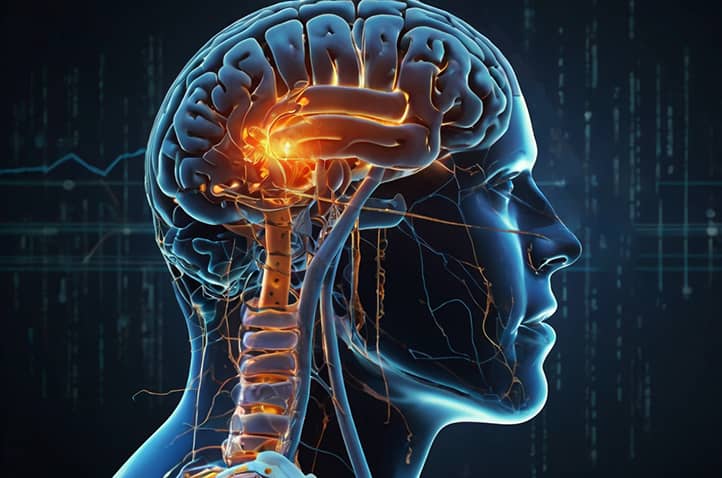
Pathologies of Higher Nervous Activity
The study of pathologies of higher nervous activity not only helps develop new methods of diagnosis and treatment but also expands our understanding of normal brain function. For example, research on patients with amnesia has led to the discovery of various memory systems in the brain.
Modern genetic studies reveal the complex interaction between genes and the environment in the development of mental disorders. Epigenetic mechanisms, responding to stress and other environmental factors, play a key role in shaping susceptibility to various mental illnesses.
The development of neuroprosthetics and brain-computer interfaces opens new possibilities in treating various neurological disorders. From restoring motor functions in patients with paralysis to creating artificial vision for the blind, these technologies promise a revolution in neurorehabilitation.
Neurological Disorders
- Alzheimer’s Disease:
- A progressive neurodegenerative disease.
- Characterized by the accumulation of beta-amyloid and tau protein in the brain.
- Leads to memory, thinking, and behavioral impairments.
- Parkinson’s Disease:
- A neurodegenerative disorder associated with dopamine deficiency.
- Characterized by motor disturbances (tremors, rigidity, bradykinesia).
- May be accompanied by cognitive and emotional disorders.
- Epilepsy:
- Characterized by recurrent epileptic seizures.
- Associated with abnormal synchronization of neuronal activity.
- Can lead to cognitive impairments and behavioral changes.
- Multiple Sclerosis:
- An autoimmune disorder of the central nervous system.
- Leads to demyelination of nerve fibers.
- Causes various neurological symptoms, including motor, sensory, and cognitive impairments.
- Stroke:
- An acute disruption of cerebral blood circulation.
- Can be ischemic (vessel blockage) or hemorrhagic (bleeding).
- Leads to various neurological deficits depending on the location of the lesion.
Mental Disorders
- Depression:
- Characterized by a persistent low mood, loss of interest, and pleasure.
- Associated with disruptions in neurotransmitter systems (serotonin, norepinephrine, dopamine).
- May be accompanied by cognitive impairments and changes in neuroplasticity.
- Anxiety Disorders:
- A group of disorders characterized by excessive anxiety and fear.
- Associated with dysfunction of the amygdala and other structures of the limbic system.
- May include panic attacks, phobias, and generalized anxiety disorder.
- Schizophrenia:
- A severe mental disorder characterized by disturbances in thinking, perception, and behavior.
- Associated with imbalances in the dopaminergic and glutamatergic systems.
- Manifests with positive (hallucinations, delusions) and negative (apathy, social withdrawal) symptoms.
- Bipolar Disorder:
- Characterized by alternating manic and depressive episodes.
- Associated with disruptions in mood regulation and energy balance.
- May be accompanied by cognitive impairments.
- Obsessive-Compulsive Disorder (OCD):
- Characterized by intrusive thoughts (obsessions) and repetitive behaviors (compulsions).
- Associated with dysfunction in the cortico-striato-thalamo-cortical circuits.
- Often accompanied by anxiety and social adaptation issues.
The study of pathologies of higher nervous activity not only helps develop new treatment methods but also deepens our understanding of the brain’s normal functioning. Many of these disorders have complex etiologies, including genetic, epigenetic, and environmental factors, highlighting the importance of a comprehensive approach to their study and treatment.
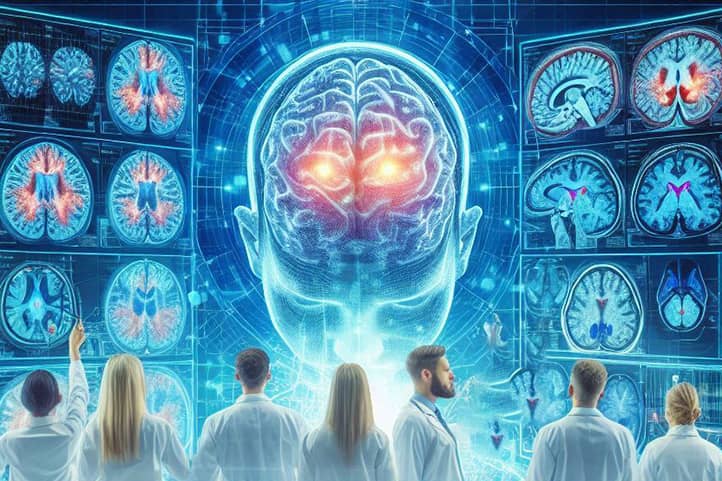
Modern Methods of Brain Research
The development of neuroimaging methods has revolutionized brain research, allowing the observation of its functioning in real time. From structural MRI, which reveals anatomical details, to functional MRI, which shows activation patterns during various cognitive tasks, these methods provide an unprecedented view of the living brain.
Optogenetics, allowing control of individual neurons’ activity using light, has ushered in a new era in experimental neurobiology. This technology not only allows the study of causal relationships between neuronal activity and behavior but also promises new approaches to treating neurological diseases.
The development of big data analysis methods and artificial intelligence opens up amazing opportunities for interpreting complex neurobiological data. From identifying biomarkers of mental illnesses to creating detailed maps of brain connections, these approaches promise a revolution in our understanding of the nervous system.
Neuroimaging
- Magnetic Resonance Imaging (MRI):
- a) Structural MRI:
- Provides detailed images of brain anatomy.
- Used to diagnose structural abnormalities and damage.
- b) Functional MRI (fMRI):
- Measures blood flow changes in the brain related to neuronal activity.
- Allows studying brain activation patterns during various tasks.
- c) Diffusion Tensor Imaging (DTI):
- Visualizes brain white matter and the direction of nerve fibers.
- Used to study structural connections between different brain areas.
- a) Structural MRI:
- Positron Emission Tomography (PET):
- Measures glucose metabolism and other substances in the brain.
- Used to study neurotransmitter systems and receptors.
- Applied in the diagnosis of neurodegenerative diseases.
- Single Photon Emission Computed Tomography (SPECT):
- Measures blood flow in various brain areas.
- Used for diagnosing epilepsy, dementia, and other neurological disorders.
- Computed Tomography (CT):
- A fast method for visualizing brain structure.
- Especially useful for diagnosing acute conditions (stroke, trauma).
Electroencephalography (EEG)
EEG is a method for recording the electrical activity of the brain:
- Allows measuring the cumulative activity of large groups of neurons.
- Has high temporal resolution (milliseconds).
- Used to study brain rhythms in various states (wakefulness, sleep, cognitive activity).
- Applied in the diagnosis of epilepsy, sleep disorders, and other neurological disorders.
- The development of EEG analysis methods allows for the investigation of functional connections between different areas of the brain.
Other Research Methods
- Transcranial Magnetic Stimulation (TMS):
- Allows for non-invasive stimulation or suppression of activity in specific areas of the cerebral cortex.
- Used to study the functional role of various brain regions.
- Applied in the treatment of depression and other mental disorders.
- Optogenetics:
- A method that allows control of the activity of individual neurons using light.
- Used in experimental animal research to study neural circuits.
- Electrocorticography (ECoG):
- Records electrical activity directly from the surface of the cerebral cortex.
- Provides high spatial and temporal resolution.
- Used in preoperative assessment of patients with epilepsy.
- Neurophysiological Methods:
- Intracellular and extracellular recording of neuron activity.
- Patch-clamp technique for studying ion channels.
- Optical recording of neuron activity using calcium indicators.
- Neurochemical Methods:
- Microdialysis for measuring the concentration of neurotransmitters in vivo (in a living organism).
- Immunohistochemistry for studying the distribution of proteins in the brain.
- Genetic and Molecular Biology Methods:
- Studying gene expression in the brain.
- Creating transgenic animals to model neurological disorders.
- Computational Modeling:
- Creating mathematical models of neural networks.
- Simulating the operation of individual neurons and entire brain regions.
These methods provide researchers with unique opportunities to study higher nervous activity at various levels of brain organization—from individual molecules and neurons to entire neural networks and behavior. The combination of different methods allows for the most complete understanding of brain function and the mechanisms of higher nervous activity.
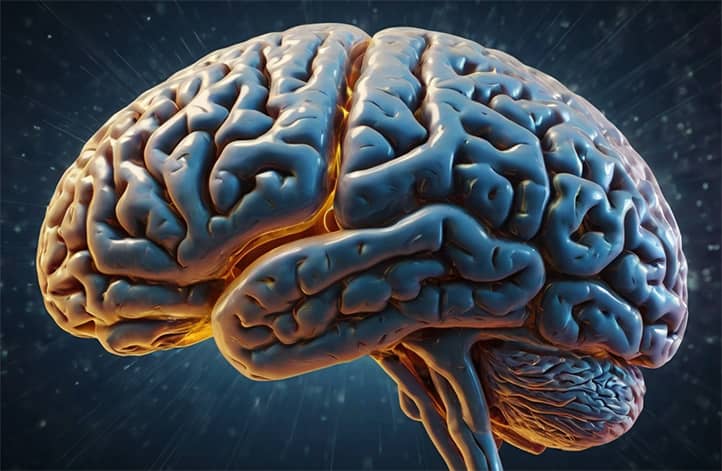
Conclusion
The study of higher nervous activity represents one of the most exciting and promising areas of modern science. It not only uncovers the mysteries of human brain function but also provides tools for improving the quality of life for individuals suffering from various neurological and mental disorders. With each passing year, our understanding of the complex mechanisms underlying consciousness, thought, and behavior deepens, opening new horizons in medicine, psychology, and technology.
The interdisciplinary nature of higher nervous activity research unites scientists from various fields—from molecular biologists to artificial intelligence specialists. This synergy of knowledge and approaches helps form a holistic picture of brain function, connecting processes occurring at molecular, cellular, and systemic levels. Such an integrative approach not only deepens our understanding of fundamental principles of nervous system function but also paves the way for developing innovative methods for diagnosing and treating a wide range of diseases.
The development of neuroimaging technologies, optogenetics, and neurointerfaces allows researchers to delve deeper into the mysteries of brain function, observing and even modulating neural activity with unprecedented precision. These advancements not only expand the boundaries of our knowledge but also raise new ethical questions that require careful consideration and discussion.
As we learn more about higher nervous activity, it becomes evident how plastic and adaptable the human brain is. This remarkable ability to change and learn throughout life opens new prospects in education, rehabilitation, and personal development. Understanding the mechanisms of neuroplasticity enables the development of more effective methods for learning, recovery from injuries, and even preventing age-related cognitive decline.
Research in higher nervous activity also has profound philosophical implications, prompting us to reconsider concepts of consciousness, free will, and the very nature of human experience. They challenge our perceptions of ourselves and our place in the universe, revealing new facets of human nature.
In conclusion, the study of higher nervous activity remains one of the most dynamically developing and promising areas of science. It not only uncovers the secrets of the functioning of the most complex structure known to us—the human brain—but also provides tools for addressing many problems facing humanity. By continuing to deepen our understanding of higher nervous activity, we not only unveil the mysteries of our own consciousness but also open new pathways to enhance human potential and well-being.
